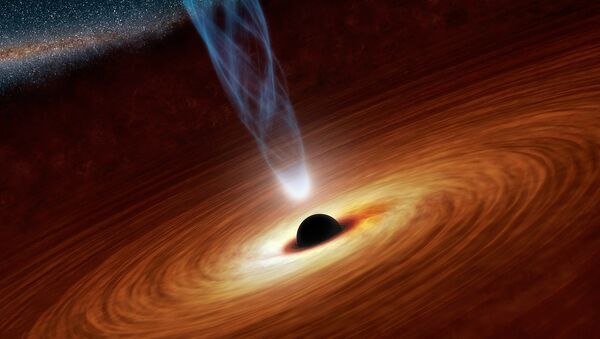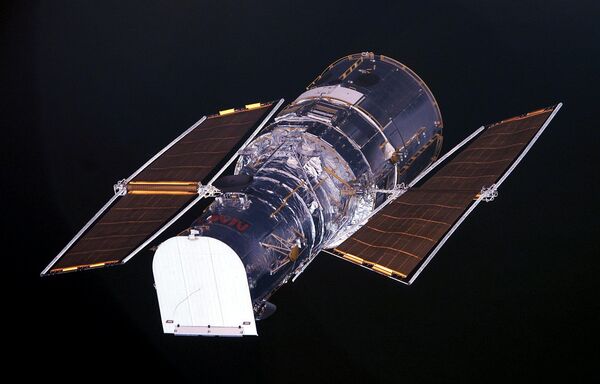Astronomers believe they may have discovered an elusive cosmic body called the "missing link" black hole while unraveling a mystery dating back decades, according to research published in The Astrophysical Journal Letters.
According to the NASA space agency, the object – also known as an “intermediate-mass hole” - was identified by the Hubble Space Telescope.
"Intermediate-mass black holes are very elusive objects, and so it is critical to carefully consider and rule out alternative explanations for each candidate. That is what Hubble has allowed us to do for our candidate," said Dacheng Lin of the University of New Hampshire, lead author of the study.
The study, which reads rather like a Sherlock Holmes story, according to NASA, dates back to 2006 when two satellites, NASA's Chandra X-ray Observatory and ESA's (the European Space Agency) X-ray Multi-Mirror Mission (XMM-Newton), came across strong X-ray flares that didn’t seem to have an obvious source.
While matching the flashes that would be emitted when a star was being swallowed up by a black hole, the location of the X-ray was far outside of the galaxy's centre, where massive black holes are normally situated.
At this point Hubble telescope was called in to solve the mystery.
High-resolution imaging from the telescope suggested that the flares were likely coming from a cluster of stars on the outskirts of another galaxy, ruling out that the reason was a neutron star. The latter is a remnant of an exploded star in our Milky Way which isn’t massive enough to collapse into a black hole.
This fired the hopes of the team, as a cluster of stars on the outskirts of the distant galaxy was where they would anticipate locating an intermediate-mass black hole (IMBH).
Universe’s Most Elusive Object
The "intermediate-mass holes" are black holes which are much smaller than the supermassive ones situated at the heart of galaxies, but still larger than stellar black holes – the result of a star collapsing upon itself.
The IMBHs do not have readily available sources of fuel, nor do they boast the gravitational pull of supermassive black holes. The latter always have the fuel to draw in stars and other cosmic material, which is why their so-called X-ray glow is mostly constant.
However, the smaller black holes are known for not often emitting this glow – thus rendering them so elusive.
"Astronomers essentially have to catch an IMBH red-handed in the act of gobbling up a star," said NASA.
As they analyzed the x-ray glow from the swallowed up star, the mass of the IMBH was estimated based on both X-ray luminosity and the spectral shape.
"This is much more reliable than using X-ray luminosity alone as typically done before for previous IMBH candidates… The reason why we can use the spectral fits to estimate the IMBH mass for our object is that its spectral evolution showed that it has been in the thermal spectral state, a state commonly seen and well understood in accreting stellar-mass black holes," said Lin.
While the data confirmed the object as an IMBH, the mystery is still an open one, as further studies will be required to find out how the “intermediate-mass holes” form, if they ever grow to become supermassive black holes, and do they always occur within dense star clusters.



